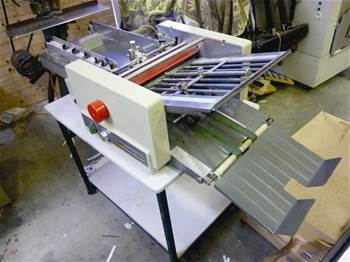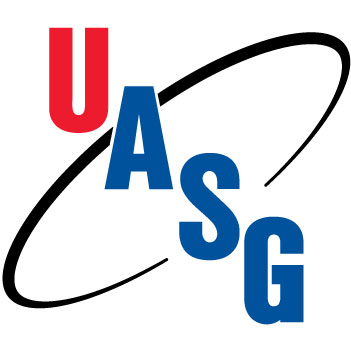Tips to Achieve A Great Fold For A Folded Printing Project
It is essential to make sure your sizing and folds are accurate. A nightmarish situation for any print job is to have all of your pieces printed and then once the folding begins, things just don’t line up very well. Here are some tips to make sure that you avoid these situations.
The technology in pre-press changes rapidly, it is becoming harder for printers to stay current in binding. But not to worry, we have what you should know about your post press and the plan for success.
Here is a list of 12 tips for folding paper right.
Communication. When calling for a quote, include product and any end use information. Provide folding samples, blue lines, rule up sheets & bulking dummies. The best bindery solution usually changes as run length, end use & design requirements change. Perfect layouts for jobs may not work if one dimension changes even slightly. A good rule of thumb is to plan for a 1/8th inch margin between copy and the intended trim position, and another 1/8th inch for any take off trim. This reduces the risk of final sizing problems and allows for natural variation in both printing and binding processes. Smaller margins may be possible.
Paper. Variations in bulk, excessive waviness and brittle or static charged stock contribute to poor performance on different folding machines. Paper bulk is extremely variable. One example would be 80# uncoated cover stock can caliper anywhere from 8- to 13-points. This is important because 10 point stock usually folds easily while stock thicker than 12 point require different folding techniques & machines. If a print job is done on a heat set web press, consistent drying time is crucial because oven temperature and web speed variation affect paper pliability and brittleness. Recycled paper has a tendency to have less strength than preconsumer paper due to the shorter paper fibers. Recycled paper is less pliable and is subject to more jams, increased tearing, a poorer quality fold and more wrinkles.
Grain direction. Folding with the grain reduces cracking problems and may eliminate the need for channel scoring or inline wet scoring, both decrease productivity and increase costs. If you must fold against the grain, consider specifying a stock with short fibers and off machine coating for better moisture control. Remember that inks tend to be brittle and may crack when bent, exposing paper fibers underneath.
Ink. No matter the time pressure, resist converting jobs with wet ink. To prevent this problem when using slow drying inks like reflex blue, apply varnish to avoid smudging & marking. When metallic inks are used, varnish will help reduce scratching. Soy inks tend to scuff more than regular petroleum based inks.
Panel Sizing. For barrel folds, the outer 2 panels should be sized to a final finished size; each succeeding interior panel should decrease at least 3/32nd inches; and the last panel should be 1/16th inches smaller than the preceding one. Failure to do this will lead to a lot of problems including bend overs, bad color breaks, jams and spoilage.
Washout. Remember that paper has 3 dimensions. When folding right angle pieces, or when one sheet is nestled inside another, allow for washout (creep). Paper’s third dimension, thickness, will build up on multiple right-angle folded projects and peek out of the final folded product as washout. Heavily contrasted colors will make washout appear worse, whereas carefully planned colors can make it barely noticeable.
Thick Stock. Generally, the thicker your stock, the more variables you will face. Pre score stock 100# text weight or heavier. Some thicker stocks without critical color breaks can be inline wet scored or folder scored, but always ask for an opinion before skipping channel scoring. In some cases a scoring machine attached inline to a folder will work nicely. When folding stock thicker than 10 points, watch for ripple cracking on buckle folders. A knife folder generally will not ripple crack unless the stock is thick, causing the sheet to fracture as it bends around the rollers.
Varnish. Although varnish seals ink and prevents marking and smudging, the surface is slippery and fold rollers have difficulty getting a good grip. Furthermore, varnish dries to an uneven surface of peaks and valleys. When sheets run through folder rollers, the peaks are knocked off and ground into powder that gets on the rollers and alters the gripping ability. The position of a fold is determined when the rollers get a solid grip on the buckling sheet. If there is any change in the gripping characteristics of the rollers, the fold moves. Changing the backstop position and the plate is a temporary solution at best because the piece will quickly go out of folding registration. Instead, it is best to keep rollers clean during production.
Die Cuts. If your project is die-cut, provide a sample, or a thumbnail sketch so your bindery expert can advise you about any hidden traps before the project gets printed. When folding die-cut pieces, sometimes it is possible to get away with uneven or non right angle side guides.
Specialty Folding. Printers that do jobs with specialty folding techniques are very valuable in the marketplace. Do not give up on jobs with specialty folds because there are binding specialists that can help you make money on them. If a print buyer sends out a quote to three printers but only one knows how to finish the job, guess which printer gets it? Iron cross folds, swinger folds, pop up folds, miniature gate folds, projects with 18 accordion folds, etc., are all possible and practical. When planning a gate folded piece, ask your bindery what their standard gap distance will be between gates. Do not accept a gap greater than 1/4 of an inch. On many jobs a 1/16th inch gap or even less is possible. Wide gap gate folds are also possible.
Miniature Folding. Before embarking on mini folded projects, check downstream production requirements. Some automatic inserting machinery requires that pieces should lie flat. If glue is objectionable, ask your mini folding company whether or not they can get the product to lie flat without it. There are methods of overcoming this common miniature folding problem. Be sure to discuss paper options with your bindery because mini folding machines handle less stock variations than regular sized folders.
Oversized Folding. A common problem in over-sized folding occurs on products with more than 40 panels, such as thick maps. If final product bulk is not accounted for when designing the cover and back panel, the piece may look terrible if there are color break problems. Consulting with a map folding expert on projects of this nature.
Be sure to check out our other services like Offset Printing in St. Louis







